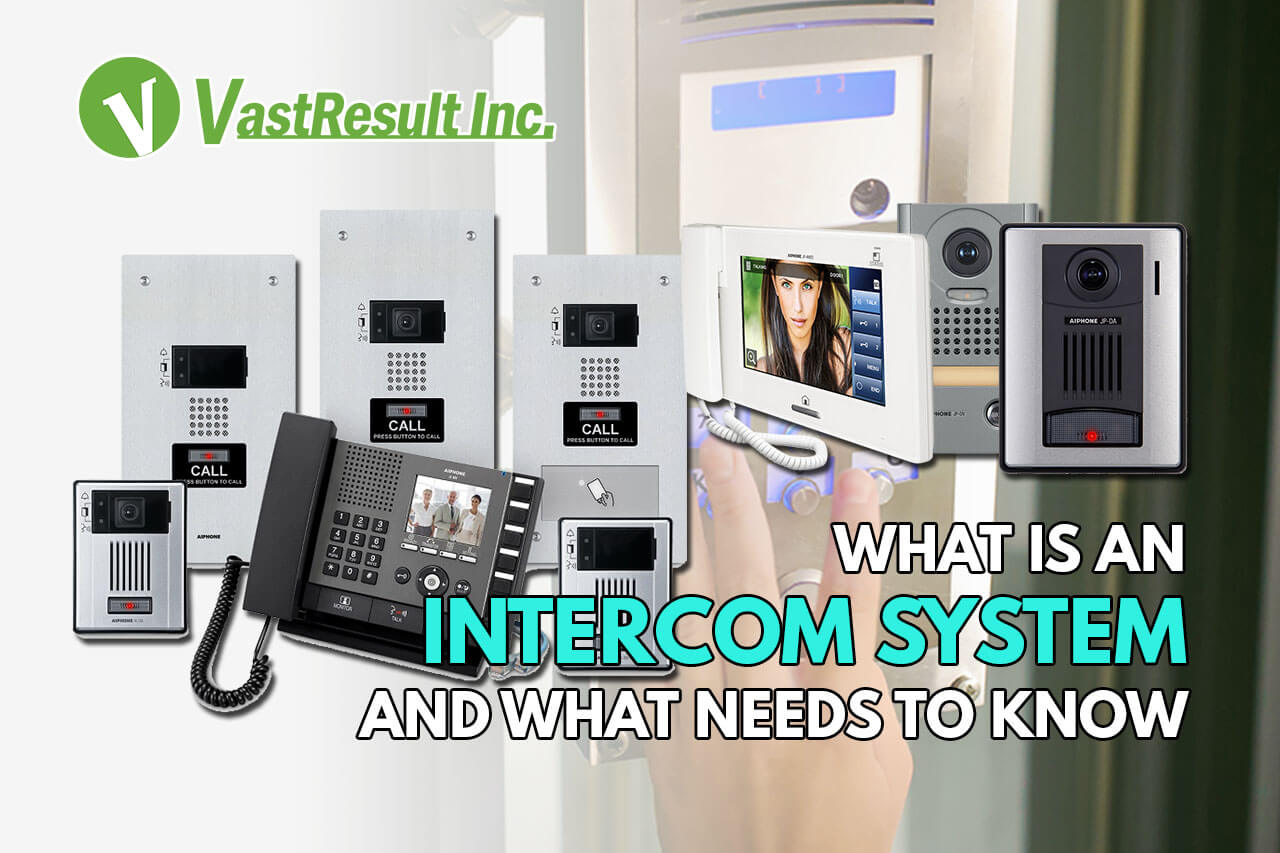
The Benefits of Structured Cabling System
January 9, 2023
Cost of an Electric Gate – Driveway, Sliding, and Automatic
January 9, 2023What is an Intercom System and what needs to know
What is an Intercom System?
An intercom, also known as an intercommunication device, intercommunicator, or interphone, is a stand-alone voice communications system that operates independently of the public telephone network within a building or small group of buildings. Intercoms are often permanently installed in buildings and vehicles. Intercoms can be linked to public address loudspeaker systems, walkie talkies, telephones, and other intercom systems. Some intercom systems regulate equipment like signal lights and door locks.
Intercoms are utilized on a broad range of properties, from single-family homes with only one link between a resident and the property’s door to multi-unit complexes with intercom gear placed in each individual apartment. Some are video-equipped, and their wiring (electrical installation) may be connected to the outside with a few pairs (4-6 pairs) while regulating an electric strike. The most recent generations are even computer-compatible, and some models have TCP/IP compatibility.
It is a piece of electronic equipment that allows for two-way communication via audio/video transmission. Intercom systems have been surpassed in popularity over the years by digital telephone networks and cellular communication. This is not to say that intercom systems do not have a role in today’s environment. Intercom systems have several applications, including improving security by securing entrance/exit points and increasing communication within a structure.
The usage of intercoms has reduced since the introduction of cellular communication, digital telephone networks, and other communication technologies. However, there are still many situations where these devices outperform everything else. There are several systems available, as defined below:
Wireless Intercoms
A wireless system is utilized in applications where cables cannot be run. There is a wide range of two-way wireless communication equipment available, including portable radios, outdoor wireless callboxes, and typical desktop systems. The range of these gadgets varies greatly depending on the wireless technology employed.
Wired Intercom Systems
When wires can be run between places, a wired system can provide more privacy and avoid any interference from nearby systems. These systems support a variety of wire types, including 2-wire shielded and Cat-5/6. A connected video system may be the best option if you are contemplating one.
Video Intercom
These normally include an entry unit with a camera, speaker, and a push button, as well as an inside monitor device that can interact with the entrance unit. Internally, certain systems may support numerous visual displays. Given the difficulties of transmitting video over long distances without interference, most accessible systems are wired.
Apartment Intercoms
This system has a door unit at the entry door, and each apartment or flat has one or more units that may talk to the door and perhaps view the visitor, or the door unit calls a landline or cellular telephone number. A visitor just hits the appropriate button for the apartment to whom they wish to talk, and the renter may respond by speaking back and then pressing a button to unlock the door.
Two-Way Radios
While these are technically not intercoms, there are two-way radios that communicate with base station intercoms. So you can have the flexibility of a mobile radio that communicates over long distances mixed with the capability a fixed intercom gives you.
International network cabling standards are issued by ISO/IEC, CENELEC, and the Telecommunications Industry Association (TIA). CENELEC, International Electrotechnical Commission (IEC), or International Organization for Standardization (ISO) standards are used in the majority of European nations. EN50173 is the principal CENELEC document, which introduces contextual linkages to the whole suite of CENELEC papers. ISO/IEC 11801 is at the helm of ISO/IEC documentation. The Telecommunications Industry Association in the United States publishes the ANSI/TIA-568 standards for telecommunications wiring in business premises. Looking for trusted and most experience Structure Cabling Contructor & Supplier?
Why Choose VastResult?
- Superior goods that comply with Philippines’s criteria
- Both the number of connections and the distance are infinite.
- Adaptation to other IP-based systems and external systems
- Low-cost setup intercom system and operation without the need for servers, as well as being very robust and compact
- highly IP65/IK08 compliant waterproof intercom system, dustproof intercom system, and shockproof intercom system.
- Numerous product lines, ranging from affordable to cutting-edge
- Easily combines with wall surfaces because to its well-known design
- Using a specific program to connect to smartphones and tablets
CONTACT US NOW!




